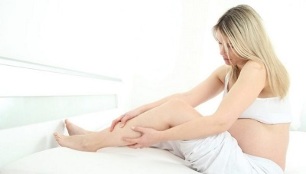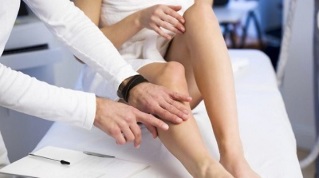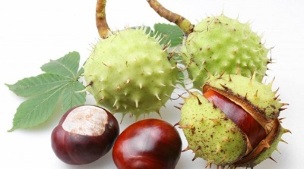Varicose veins are diseases that quickly become chronic. The disease provokes a change in the length and diameter of the veins, the appearance of nodes, thinning of the venous walls. Most often, varicose veins manifest themselves during pregnancy, when a woman's body has significant loads against the background of hormonal changes.
Reasons for the appearance

If we consider the reasons under the influence of which varicose veins occur during pregnancy, we can distinguish several main ones:
- Weight change.During pregnancy, veins appear in the legs due to an increase in weight of ten or more kilograms, which leads to increased pressure and load on the vessels;
- Hormonal changes in the body.During the formation of the fetus, the hormonal background of the woman is repeatedly rebuilt, which damages the vessels: they lose elasticity, become fragile, prone to the appearance of varicose veins;
During pregnancy, veins appear in the legs due to a weight gain of ten or more kilograms.
- During pregnancy, the work of the vein valves changes as the volume of circulating blood increases. It should be noted that varicose veins after pregnancy, if left untreated, do not disappear anywhere;
- Hereditary factors. If one of the parents of a pregnant woman has varicose veins, there are high chances of manifesting the same disease;
- Choosing the wrong clothes and shoes. Sometimes pregnant women are surprised by the origin of varicose veins, without thinking that tight clothing and high heels can cause it;
- Decrease in physical activity. In the veins of the legs during pregnancy, stagnation of blood can begin if the pregnant woman moves a little and does not do special exercises.
Some of the causes that cause varicose veins during pregnancy are easy to eliminate; just change your habits.
Symptoms and signs
Varicose veins during pregnancy in the initial stages are difficult to detect as there are no pronounced symptoms.

However, it is worth contacting your doctor if you experience the following symptoms:
- feeling of heaviness and pain in the legs;
- swelling, especially at night, if you sit for a long time;
- seizures, especially at night;
- redness or darkening of the skin;
- the appearance of vascular networks;
- seals on the skin, the appearance of trophic ulcers;
- Inflamed veins during pregnancy are easily palpable.
Types of varicose veins during pregnancy
Varicose veins during pregnancy can be of several types. The most common disease is:
- in the groin;
- on legs;
- in the vagina;
- in the womb.
The manifestation of varicose veins in the small pelvis has symptoms similar to some gynecological diseases, making it more difficult to diagnose. With each pregnancy, the risk of varicose veins on the lips also increases (symptoms are felt more after physical exertion or sexual intercourse).
Diagnosis
Varicose veins and pregnancy have a great impact on a woman's body, causing additional stress on many organs, so it is important to identify the disease at an early stage.
To identify varicose veins in pregnant women, the duplex ultrasound method is currently used. This modern type of diagnosis has replaced the previously performed ultrasound angioscanning and Doppler mapping. Duplex ultrasound takes 20 minutes and provides detailed information on the condition of the superficial and deep veins.
In some cases, for the purpose of additional diagnostics, perform:
- Segmental Doppler.A simple but reliable test that indicates the condition of the arteries, establishing their patency and narrowing.
- BMR (magnetic resonance venography).If varicose veins are diagnosed during pregnancy, this test allows you to assess the condition of the vessels without using contrast, it does not cause any harm to the body.
- Computed tomography phlebography.It is performed using contrast, it allows to assess the state of the vessels in great depth. If varicose veins have unclear symptoms, this type of examination is prescribed.

Disease treatment methods
Not all methods that can be used to treat varicose veins after pregnancy can be used during pregnancy. For example, during pregnancy, injections of certain medications cannot be used and surgical intervention is not always possible. These restrictions also apply to women with varicose veins in the legs, but who plan to become pregnant in the next two years.
Surgical treatment
As mentioned above, varicose veins during pregnancy are dangerous due to limited treatment options. However, there are situations when drug treatment is not enough, then surgery is performed. For example, if severe thrombophlebitis is expressed or there are trophic ulcers that do not heal.
In most cases, operations are performed at a gestational age of no more than six months, and sclerotherapy or frequency ablation is used, and more operations are performed after pregnancy. In the postoperative period, the use of special underwear and therapeutic exercises is prescribed; These recommendations apply to the postpartum period.
Nowadays, if severe varicose veins are detected during pregnancy, the use of a laser in treatment is practiced instead of a scalpel. Modern technique allows you to quickly and safely defeat varicose veins.
Medications
Doctors know perfectly what the danger of varicose veins is, so they recommend contacting specialists at the first manifestations of the disease. In such a situation, a course of venotonic drugs and means to normalize blood density is prescribed. There is also a large selection of specialty ointments and gels for external use, including those containing Gingko biloba. Any medication that affects the tone of the veins is serious, so they should be taken only according to the scheme recommended by the doctor.
Alternative treatment
People have been dealing with the tandem "pregnancy and varicose veins" for a long time, therefore, before, and even today, popular methods such as lotions, tinctures, ointments and baths are widely used in treatment. Of course, if the disease is neglected, these techniques are considered exclusively as an auxiliary therapy, but in the early stages, alternative treatment is quite effective.
Compress tinctures:

- Hops tinctures help overcome in the initial stages of varicose veins during pregnancy. You need to take 1 tablespoon of cones, pour 200 milliliters of boiling water and keep for 20 minutes. After that, the solution is drained and used for compresses. Similarly, infusions are prepared from horse chestnut flowers or leaves. These compresses can be applied at night and remain on the leg until morning.
- The veins during pregnancy are treated with powder of peeled horse chestnut fruits: 50 grams of this powder are poured with 200 milliliters of vegetable oil and the legs are massaged with the resulting composition before going to bed;
- If varicose veins are found early during pregnancy, blanched cabbage leaves are used as compresses, which relieve inflammation, pain, and swelling.
It is recommended to treat varicose veins during pregnancy on the legs with trays of infusions of various medicinal herbs, the choice of which is wide enough in all pharmacies. Recommended to do this:
- do not exceed the temperature of the solution in the bath more than 38 degrees;
- take baths for no more than 15 minutes;
- after the procedure, do a relaxing massage;
- Lie down at the end of the bath for 30-40 minutes with your legs raised.
Varicose veins in pregnant women are also treated with decoctions of herbs that are taken by mouth:
- A decoction of meadow clover flowers is prepared: 1 tablespoon of chopped flowers is poured into a thermos and poured with 400 milliliters of boiling water. After two hours, filter the broth and drink ½ glass 4 times a day;
- You can make a collection from colt's foot leaves, wild strawberries and lingonberries, five-lobed motherwort, as well as marigold and viburnum flowers. The ingredients are mixed in equal parts, 2 tablespoons of the resulting mixture are poured with 400 milliliters of boiling water and kept for 15 minutes in a water bath. After that, you need to keep the collection for 40 minutes in a warm place. Take ½ cup 4 times a day.
Disease prevention
Varicose veins in the legs, like any disease, should not only be treated, but preventive measures should also be taken to prevent the disease or prevent its recurrence:
- It is not recommended to sit or stand for a long time. Side rest is preferable to relieve stress on the veins in the legs and small pelvis.
- To relieve tension on the veins in your legs, keep your legs elevated when lying down or sitting.
- To ease leg veins during pregnancy, wear special compression stockings. Such underwear helps redistribute blood through the veins, stimulates the blood in the veins of the legs, and reduces the likelihood of blood clots. It is recommended to wear compression knitwear not only during, but also after pregnancy, for a month and a half or two.
Remember that varicose veins in the legs are less common in people who exercise and lead a healthy lifestyle. Even light exercise helps maintain physical fitness and reduces the risk of varicose veins.






































